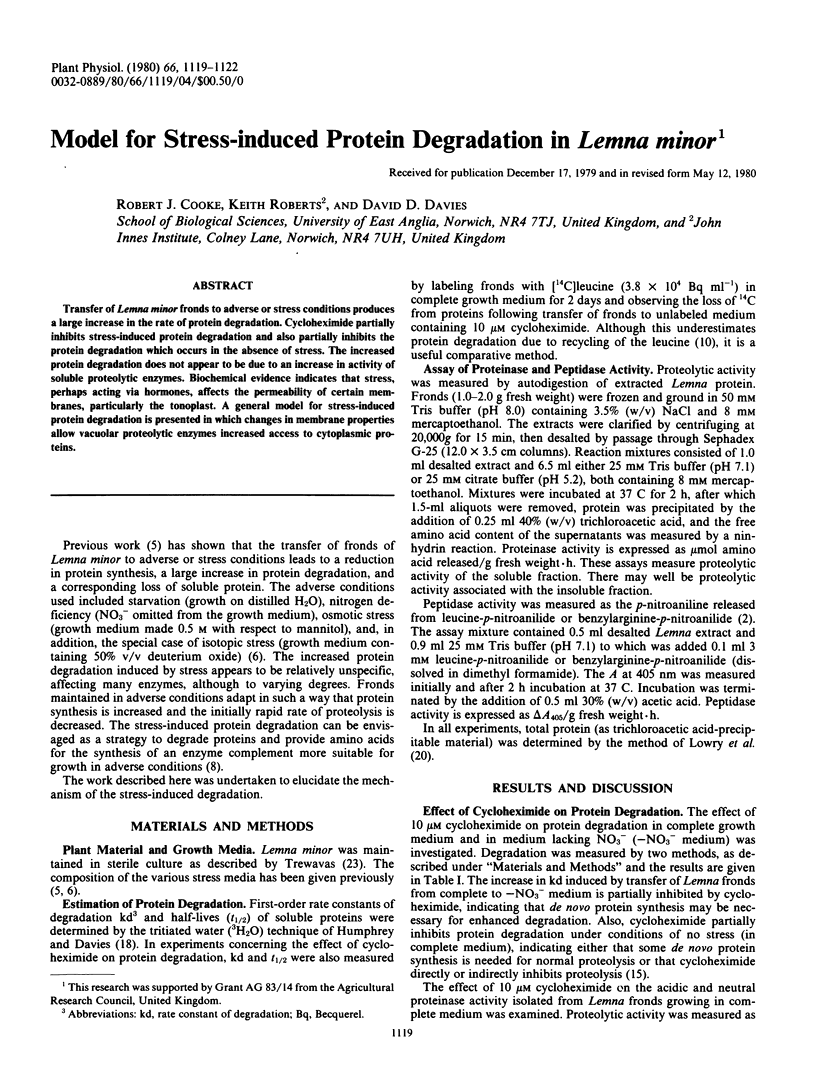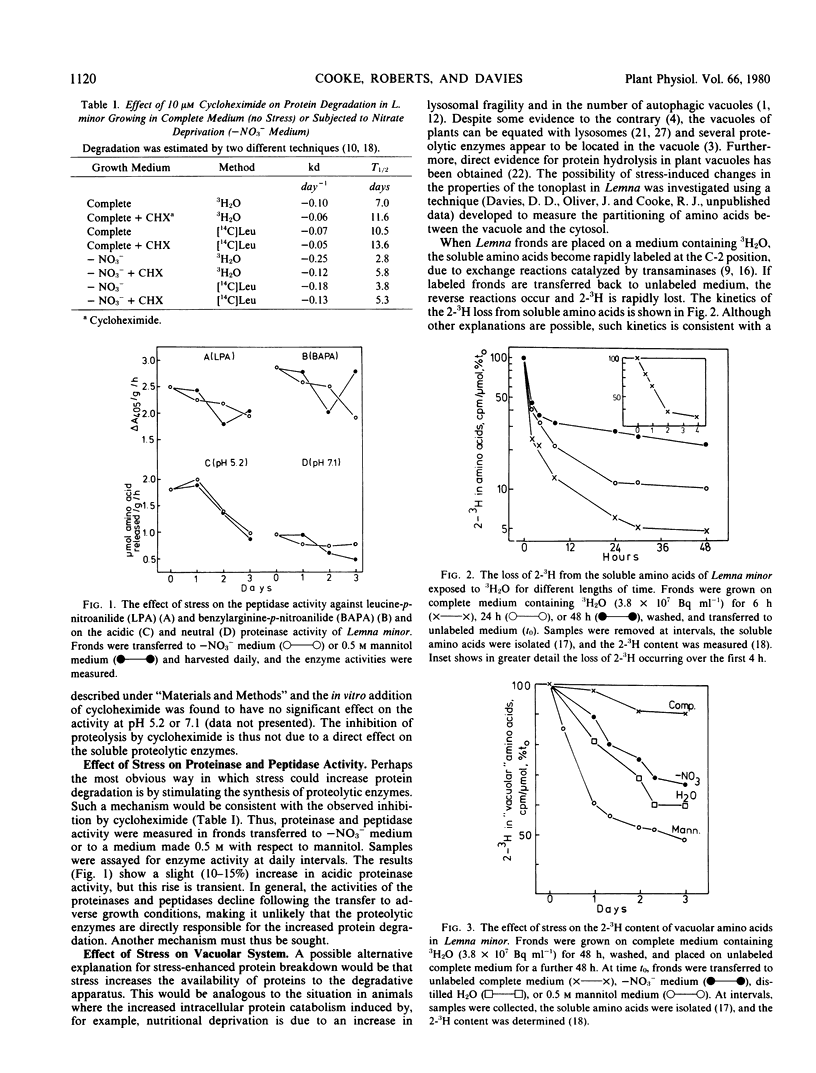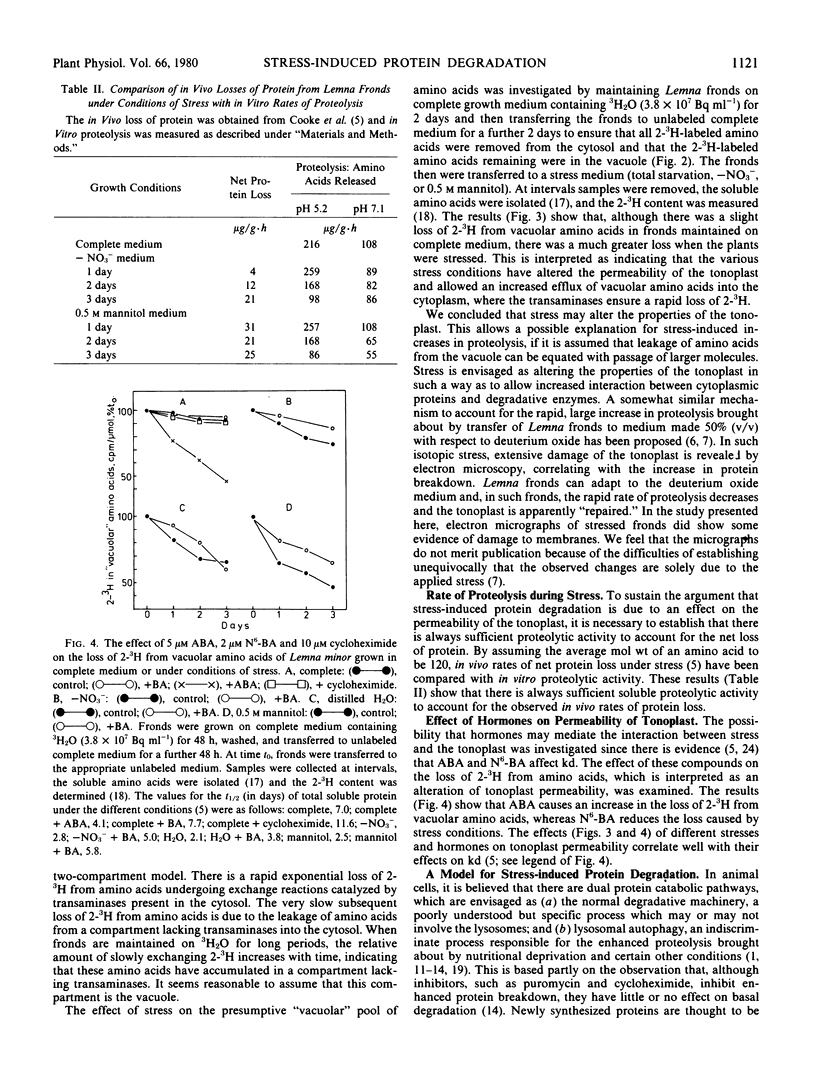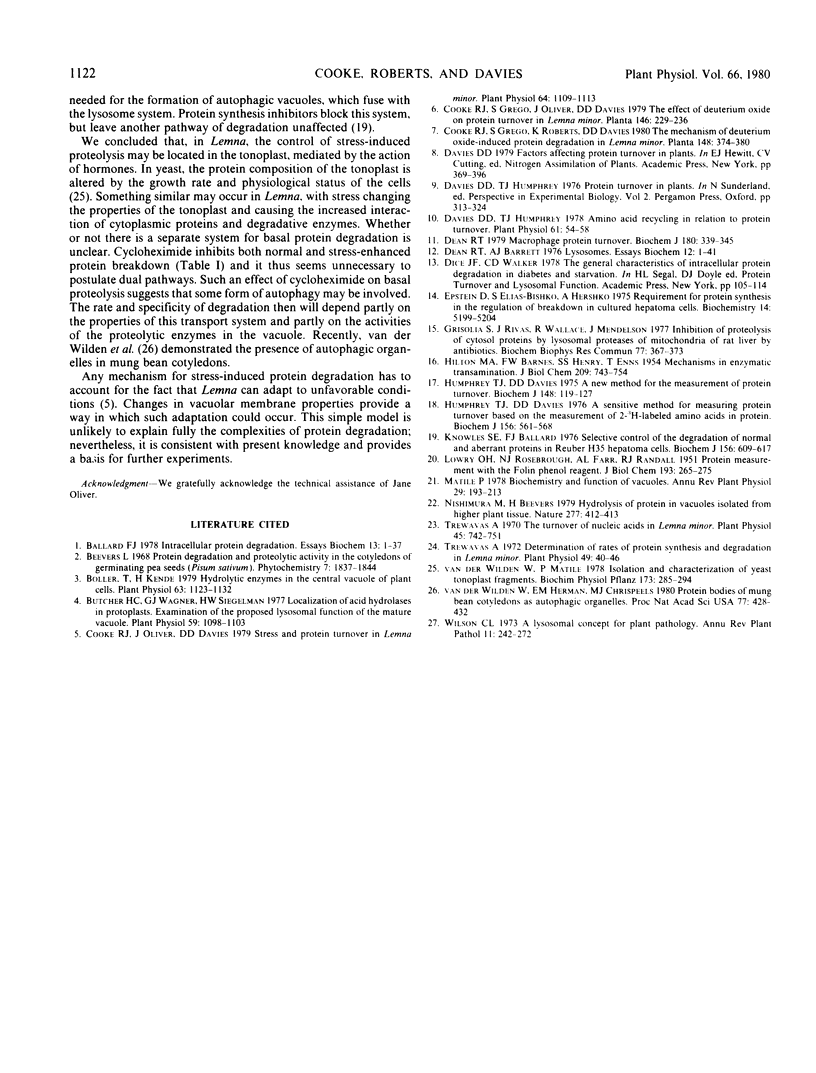Abstract
Transfer of Lemna minor fronds to adverse or stress conditions produces a large increase in the rate of protein degradation. Cycloheximide partially inhibits stress-induced protein degradation and also partially inhibits the protein degradation which occurs in the absence of stress. The increased protein degradation does not appear to be due to an increase in activity of soluble proteolytic enzymes. Biochemical evidence indicates that stress, perhaps acting via hormones, affects the permeability of certain membranes, particularly the tonoplast. A general model for stress-induced protein degradation is presented in which changes in membrane properties allow vacuolar proteolytic enzymes increased access to cytoplasmic proteins.
Full text
PDF



Selected References
These references are in PubMed. This may not be the complete list of references from this article.
- Ballard F. J. Intracellular protein degradation. Essays Biochem. 1977;13:1–37. [PubMed] [Google Scholar]
- Boller T., Kende H. Hydrolytic enzymes in the central vacuole of plant cells. Plant Physiol. 1979 Jun;63(6):1123–1132. doi: 10.1104/pp.63.6.1123. [DOI] [PMC free article] [PubMed] [Google Scholar]
- Butcher H. C., Wagner G. J., Siegelman H. W. Localization of Acid hydrolases in protoplasts: examination of the proposed lysosomal function of the mature vacuole. Plant Physiol. 1977 Jun;59(6):1098–1103. doi: 10.1104/pp.59.6.1098. [DOI] [PMC free article] [PubMed] [Google Scholar]
- Cooke R. J., Oliver J., Davies D. D. Stress and Protein Turnover in Lemna minor. Plant Physiol. 1979 Dec;64(6):1109–1113. doi: 10.1104/pp.64.6.1109. [DOI] [PMC free article] [PubMed] [Google Scholar]
- Davies D. D., Humphrey T. J. Amino Acid recycling in relation to protein turnover. Plant Physiol. 1978 Jan;61(1):54–58. doi: 10.1104/pp.61.1.54. [DOI] [PMC free article] [PubMed] [Google Scholar]
- Dean R. T. Macrophage protein turnover. Evidence for lysosomal participation in basal proteolysis. Biochem J. 1979 May 15;180(2):339–345. doi: 10.1042/bj1800339. [DOI] [PMC free article] [PubMed] [Google Scholar]
- Epstein D., Elias-Bishko S., Hershko A. Requirement for protein synthesis in the regulation of protein breakdown in cultured hepatoma cells. Biochemistry. 1975 Nov 18;14(23):5199–5204. doi: 10.1021/bi00694a028. [DOI] [PubMed] [Google Scholar]
- Grisolia S., Rivas J., Wallace R., Mendelson J. Inhibition of proteolysis of cytosol proteins by lysosomal proteases and of mitochondria of rat liver by antibiotics. Biochem Biophys Res Commun. 1977 Jul 11;77(1):367–373. doi: 10.1016/s0006-291x(77)80206-4. [DOI] [PubMed] [Google Scholar]
- HILTON M. A., BARNES F. W., Jr, HENRY S. S., ENNS T. Mechanisms in enzymatic transamination; rate of exchange of the hydrogen of aspartate. J Biol Chem. 1954 Aug;209(2):743–754. [PubMed] [Google Scholar]
- Humphrey T. J., Davies D. D. A new method for the measurement of protein turnover. Biochem J. 1975 Apr;148(1):119–127. doi: 10.1042/bj1480119. [DOI] [PMC free article] [PubMed] [Google Scholar]
- Humphrey T. J., Davies D. D. A sensitive method for measuring protein turnover based on the measurement of 2-3H-labelled amino acids in protein. Biochem J. 1976 Jun 15;156(3):561–568. doi: 10.1042/bj1560561. [DOI] [PMC free article] [PubMed] [Google Scholar]
- Knowles S. E., Ballard F. J. Selective control of the degradation of normal and aberrant proteins in Reuber H35 hepatoma cells. Biochem J. 1976 Jun 15;156(3):609–617. doi: 10.1042/bj1560609. [DOI] [PMC free article] [PubMed] [Google Scholar]
- LOWRY O. H., ROSEBROUGH N. J., FARR A. L., RANDALL R. J. Protein measurement with the Folin phenol reagent. J Biol Chem. 1951 Nov;193(1):265–275. [PubMed] [Google Scholar]
- Van der Wilden W., Herman E. M., Chrispeels M. J. Protein bodies of mung bean cotyledons as autophagic organelles. Proc Natl Acad Sci U S A. 1980 Jan;77(1):428–432. doi: 10.1073/pnas.77.1.428. [DOI] [PMC free article] [PubMed] [Google Scholar]


